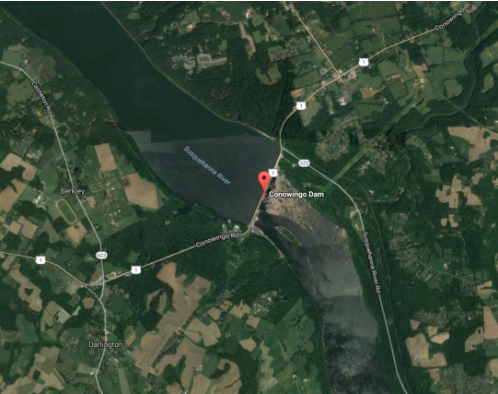|
Christina's update This week, I spent some time familiarizing myself with the Susquehanna River - the river on which David is basing the composition he’s creating that we described last week. I thought I’d share some tidbits about the Susquehanna - some of the things I learned in my research so far that stand out to me.
2. The Susquehanna’s 27,000-square-mile watershed contains parts of New York, Pennsylvania (nearly half the state), and Maryland. It is part of the larger Chesapeake Bay watershed, and as one of the larger tributaries of the Chesapeake Bay, the Susquehanna River supplies more than half of the fresh water that flows into the bay, as well as a great deal of its nutrient pollution, despite the Conowingo Dam.
3. Apparently the Susquehanna is geologically one of the oldest rivers on earth, predating not only the Appalachian mountains but apparently Pangea itself. In present day, it is one of the longest rivers in the country, and is the longest on the east coast after the Mississippi. 4. There was once a canal, the Union Canal, that connected the Susquehanna River to the Delaware River (the watershed that I live in), to provide more straightforward shipping access to Philadelphia. The canal was first proposed in 1690, constructed in the late 1700s, and decommissioned in the late 1800s. The canal is now preserved as a historic landmark. 5. The name Susquehanna is said to come from a native American tribe in the area, the Susquehannock, which translates to “People of the Muddy River.” 6. I found a great photography project in which Hannah Close, a Pennsylvania artist, documented the Susquehanna from upstream to down. 7. For some reason, a nineteenth century poem from a nature writing class I took in college has stuck in my head as one of the most immediate associations I have with the Susquehanna, and when I tell you why, I hope you find it as silly as I do. The poem is “The Merrimac” by John Greenleaf Whittier, and in it, he describes the beauties of the Merrimac River, in his native New England, by comparing it to other American Rivers he has seen, which though beautiful, don’t measure up (back here in 2016, the Merrimack River is also on American Rivers’ list, at #8). The whole 100+ line poem is in very exacting and precise rhyme, except for the lines about the Susquehanna - I always found this rather hysterical to imagine a straightlaced early American gentleman who just couldn’t think of a true rhyme for “Susquehanna” so threw in something zany. The passage is below. Home of my fathers! - I have stood Where Hudson rolled his lordly flood: Seen sunrise rest and sunset fade Along his frowning Palisade; Looked down the Appalachian peak On Juniata’s silver streak; Have seen along his valley gleam The Mohawk’s softly winding stream; The level light of sunset shine Through broad Potomac’s hem of pine; And autumn’s rainbow-tinted banner Hang lightly o’er the Susquehanna 8. I also discovered a delightful poem by Billy Collins, Fishing on the Susquehanna in July, in which he describes that the closest he came to fishing on the Susquehanna was actually looking at a painting in a museum in Philadelphia - another unexpected connection that the Susquehanna has made between David and I!
0 Comments
Leave a Reply. |
Visit our other residency group's blogs HERE
David Lagomasino is an award-winning research scientist in Biospheric Sciences at the NASA Goddard Space Flight Center in Maryland, and co-founder of EcoOrchestra.
Christina Catanese is a New Jersey-based environmental scientist, modern dancer, and director of Environmental Art at Schuylkill Center for Environmental Education.
|




